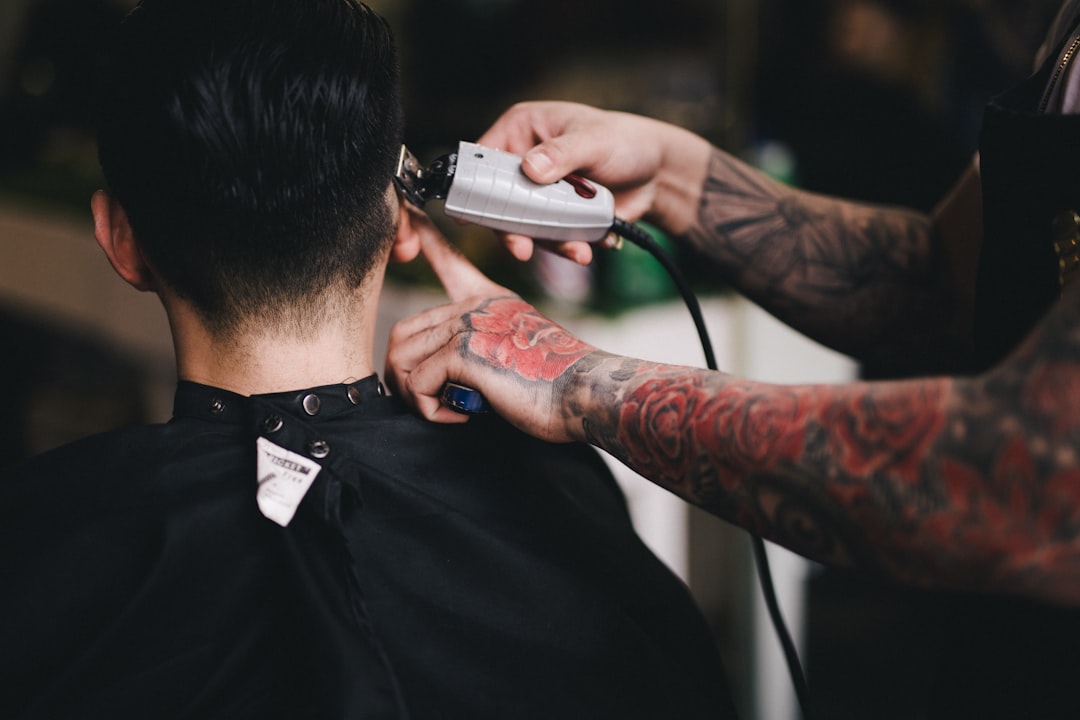When you first consider using an epilator, it’s essential to understand the mechanics behind this popular hair removal device. An epilator is designed to remove hair from the root, which is what sets it apart from other methods like shaving. The device typically features a series of tiny, rotating tweezers that grasp and pull out multiple hairs simultaneously.
This means that while the process may take a bit longer than shaving, the results can last significantly longer, often up to several weeks. By removing hair from the root, you can enjoy smoother skin for an extended period, as the hair takes longer to grow back. The technology behind epilators has evolved over the years, making them more efficient and user-friendly.
Modern epilators often come equipped with features such as multiple speed settings, pivoting heads, and even built-in lights to help you see fine hairs. Understanding how these features work can enhance your experience and make the process more effective. For instance, using a higher speed setting may be beneficial for larger areas like legs, while a slower speed can be more comfortable for sensitive areas like the underarms or bikini line.
Familiarizing yourself with your epilator’s functions will help you achieve the best results.
Key Takeaways
- An epilator works by grasping and removing hair from the root, resulting in longer-lasting smoothness compared to shaving.
- Preparing your skin for epilation involves exfoliating and ensuring that your hair is the right length for effective removal.
- When choosing an epilator, consider factors such as speed settings, attachments for different body parts, and whether it can be used wet or dry.
- To use an epilator effectively, hold it at a 90-degree angle to your skin, move it against the direction of hair growth, and moisturize afterwards.
- Minimize discomfort during epilation by taking a warm shower beforehand, using a numbing cream, and holding the skin taut while epilating.
Preparing Your Skin for Epilation
Preparation is key when it comes to epilation. Before you even turn on your device, you should ensure that your skin is clean and dry. This means taking a shower or bath to remove any oils, lotions, or dirt that may be present on your skin.
Exfoliating your skin a day or two before epilation can also be beneficial, as it helps to remove dead skin cells and can prevent ingrown hairs. You might consider using a gentle scrub or an exfoliating glove to prepare your skin effectively. Another important aspect of preparation is ensuring that your hair is at the right length for epilation.
Ideally, your hair should be about 1/8 inch long for optimal results. If your hair is too short, the epilator may not be able to grasp it effectively; if it’s too long, the process may be more painful than necessary. You might want to trim longer hairs with scissors or a trimmer before using the epilator.
Taking these steps will not only make the process smoother but also enhance the overall effectiveness of your hair removal routine.
Choosing the Right Epilator for Your Needs
Selecting the right epilator can significantly impact your experience and results. With various models available on the market, it’s essential to consider your specific needs and preferences. For instance, if you have sensitive skin, you might want to look for an epilator designed with gentler features, such as a built-in massager or a cooling attachment that can help soothe your skin during the process.
Additionally, some epilators are specifically designed for use on different body parts, so consider whether you need a versatile device or one tailored for specific areas. Another factor to consider is whether you prefer a corded or cordless model. Cordless epilators offer greater flexibility and ease of use, allowing you to move around freely without being tethered to an outlet.
However, corded models often provide more power and may be better suited for longer sessions. You should also take into account the brand reputation and customer reviews when making your decision. Researching user experiences can provide valuable insights into which models are most effective and comfortable.
Tips for Using an Epilator Effectively
| Tips for Using an Epilator Effectively |
|---|
| 1. Exfoliate before using the epilator to remove dead skin cells and reduce the risk of ingrown hairs. |
| 2. Hold the skin taut while using the epilator to help the device grab the hairs more effectively. |
| 3. Move the epilator in the opposite direction of hair growth for best results. |
| 4. Clean the epilator after each use to prevent buildup of bacteria and debris. |
| 5. Moisturize the skin after using the epilator to soothe any irritation and keep the skin hydrated. |
To achieve the best results with your epilator, there are several tips you can follow that will enhance your experience. First and foremost, always ensure that you are using the device in the correct direction—against the direction of hair growth. This technique allows the epilator to grasp and pull out hairs more effectively, leading to smoother results.
Additionally, holding your skin taut while using the device can help minimize discomfort and improve efficiency. Timing is also crucial when using an epilator. Many users find that epilating in the evening allows for any redness or irritation to subside overnight.
If you’re new to epilation, consider starting with smaller areas of your body to build your confidence and get accustomed to the sensation. As you become more comfortable with the process, you can gradually move on to larger areas. Remember that practice makes perfect; over time, you will likely find that the process becomes quicker and less painful.
Minimizing Discomfort During Epilation
While epilation can be an effective method of hair removal, it’s not uncommon to experience some discomfort during the process. However, there are several strategies you can employ to minimize pain and make the experience more tolerable. One effective method is to use your epilator after a warm shower or bath; the heat helps open up your pores and makes hair removal easier.
Additionally, applying a numbing cream or gel before epilation can significantly reduce sensitivity in particularly painful areas. Breathing techniques can also play a role in managing discomfort during epilation. Focusing on deep, steady breaths can help calm your nerves and distract you from any pain you may feel.
Some users find it helpful to listen to music or watch television while they epilate, as this can serve as a pleasant distraction from the sensation of hair being pulled out. Experimenting with different techniques will help you discover what works best for you in minimizing discomfort.
Aftercare: How to Soothe Your Skin Post-Epilation

Aftercare is an essential part of any hair removal routine, especially after using an epilator. Once you’ve finished epilating, it’s crucial to soothe your skin to reduce redness and irritation. Applying a gentle moisturizer or soothing lotion can help hydrate your skin and alleviate any discomfort you may experience post-epilation.
Look for products containing ingredients like aloe vera or chamomile, which are known for their calming properties. In addition to moisturizing, consider avoiding tight clothing or strenuous activities immediately after epilation. This will help prevent further irritation and allow your skin time to recover.
If you notice any redness or bumps after using your epilator, applying a cold compress can provide immediate relief. Taking these aftercare steps will not only enhance your comfort but also promote healthier skin in the long run.
Troubleshooting Common Epilator Issues
Even with proper preparation and technique, you may encounter some common issues while using an epilator. One frequent problem is that the device may not effectively grasp shorter hairs. If this happens, ensure that your hair is at least 1/8 inch long before attempting to epilate again.
If you’re still having trouble, consider switching to a different speed setting or trying a different angle when using the device. Another common issue is skin irritation or redness following epilation. If you find that your skin becomes overly irritated after use, it may be worth evaluating your technique or considering whether you’re using the right type of epilator for your skin type.
If irritation persists despite following proper aftercare routines, consult with a dermatologist for personalized advice on how to manage sensitive skin during hair removal.
Maintaining Your Epilator for Longevity
To ensure that your epilator remains effective and lasts for years to come, regular maintenance is essential. After each use, take a moment to clean the device according to the manufacturer’s instructions—this often involves removing hair from the tweezers and wiping down surfaces with a damp cloth. Some models come with cleaning brushes specifically designed for this purpose, making it easier to keep your device in top condition.
Additionally, consider replacing any worn-out parts as needed; many manufacturers offer replacement heads or accessories that can help maintain optimal performance over time. Storing your epilator in a cool, dry place away from direct sunlight will also contribute to its longevity. By taking these simple steps to care for your device, you can enjoy smooth skin without interruption for many years ahead.
If you are considering using an epilator for hair removal, you may also be interested in learning more about laser hair removal. Laser hair removal is a popular method for achieving long-lasting hair reduction. To find out more about this treatment option, you can visit inlaserhairremoval.
com/sample-page/’>this article on the In Laser Hair Removal website. Additionally, if you have any questions or would like to schedule a consultation, you can reach out to them through their contact page.
FAQs
What is an epilator?
An epilator is an electrical device used for removing unwanted hair from the body. It works by grasping multiple hairs simultaneously and pulling them out from the root.
How does an epilator work?
An epilator works by using a series of small tweezers that rotate and pull out hairs from the root. This results in longer-lasting smoothness compared to shaving.
Is using an epilator painful?
Using an epilator can be uncomfortable, especially for first-time users. However, many people find that the discomfort lessens with regular use as the hair becomes finer and the skin becomes accustomed to the sensation.
Are there different types of epilators?
Yes, there are different types of epilators, including corded and cordless models, wet and dry epilators, and those designed for specific areas of the body such as the face or bikini line.
How often should I use an epilator?
The frequency of epilator use depends on individual hair growth, but most people find that using an epilator every 2-4 weeks helps to maintain smooth skin.
Can anyone use an epilator?
Most people can use an epilator, but those with very sensitive skin or certain skin conditions may find it uncomfortable or irritating. It’s always best to test a small area first and consult with a dermatologist if you have concerns.






